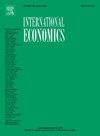两只眼睛总比一只好:汇率制度的综合分类
引用次数: 0
摘要
本文提出了一种新的事实上的汇率制度分类--综合分类。与现有的事实上的分类相比,这一框架具有若干优势。首先,它提供了一个统一的框架,整合了分歧最大的分类,即 RR 和 LYS 分类,不仅覆盖面更广,而且涵盖了广泛的汇率制度。其次,它更符合后布雷顿森林体系时代汇率制度的历史发展。其中,它为所谓的 "空心化假说 "提供了一个细致入微的视角,表明事实上的制度演变--尤其是 1990 年代末以来新兴经济体的演变--本质上是向更严格的 "管理型 "中间制度转变,而不是脱离这种制度。为了说明我们的分类具有深刻的洞察力,我们以实证方法重新审视了货币危机与汇率制度之间的关系。与其他分类方法相比,我们的分类方法不仅将货币危机发生的更高概率与中间汇率和浮动汇率制度联系在一起,而且在预测货币危机方面显示出更好的统计性能。本文章由计算机程序翻译,如有差异,请以英文原文为准。
Better two eyes than one: A synthesis classification of exchange rate regimes
This paper proposes a new de facto classification of exchange rate regimes, the synthesis classification. This framework offers several advantages over existing de facto classifications. First, it provides a unified framework that integrates the most divergent classifications, the RR and LYS classifications, not only achieving broader coverage but also encompassing a wide spectrum of exchange regimes. Second, it fits better with the historical developments of exchange rate regimes in the post-Bretton Woods era. Among others, it brings a nuanced perspective on the so-called hollowing-out hypothesis by showing that the evolution of de facto regimes —especially in emerging economies since the late 1990s— has essentially involved a shift toward more tightly “managed” intermediate regimes, rather than a move away from them. As an illustration of the insightfulness of our classification, we empirically revisit the relationship between currency crises and exchange rate regimes. Our classification not only associates a higher probability of currency crisis with both intermediate and floating regimes, but also shows better statistical performances in predicting currency crises compared to other classifications.
求助全文
通过发布文献求助,成功后即可免费获取论文全文。
去求助
来源期刊

International Economics
Economics, Econometrics and Finance-Economics, Econometrics and Finance (all)
CiteScore
6.30
自引率
0.00%
发文量
74
审稿时长
71 days
 求助内容:
求助内容: 应助结果提醒方式:
应助结果提醒方式:


